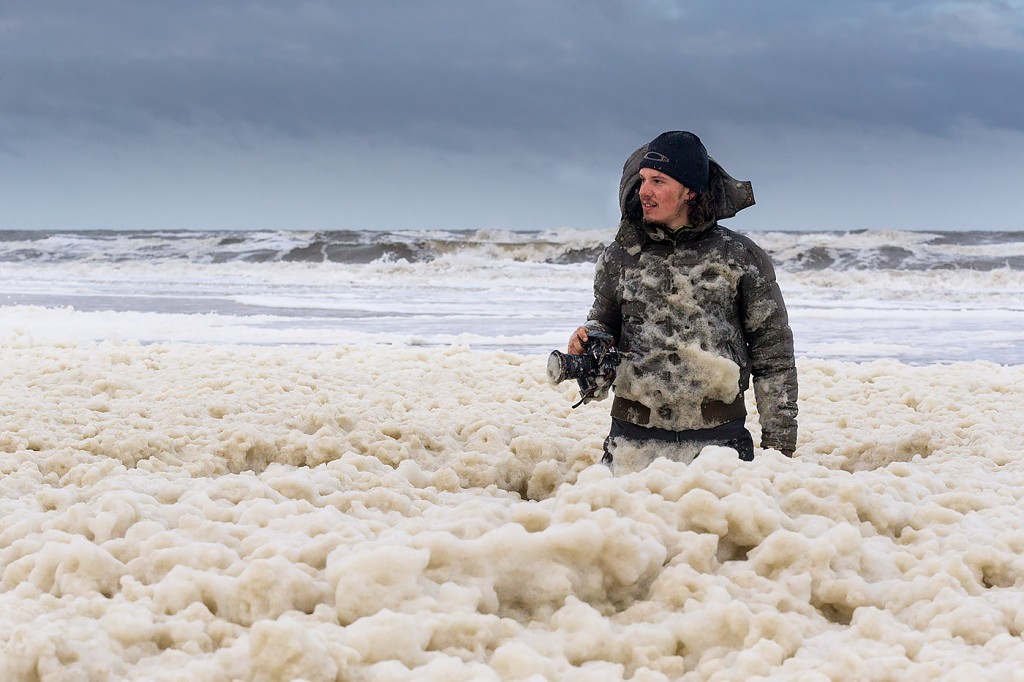
Date of birth: 31st of January 1991
How did you become passionate about nature photography?
That’s an easy one. My father was already passionate about photography and I loved joining him on his adventures. Nothing changed in the meantime, but now I bring my own camera along. Being successful in a couple of photo competitions made me even more passionate to continue and bring my photography to the next level.
What do you take with you on a photo shoot?
It depends on the situation. Most of the time I photograph landscapes and details, therefore I use a 21mm lens and a 70-200mm lens. But recently I use my 24-70mm lens a lot. I like to travel light, but so far I’ve never managed to do so, I always carry too much equipment.
What subject do you prefer to photograph and why?
I don’t have a big preference for a specific subject. I just like to be an all-round photographer. It all starts with an interesting subject and when I do some research I become passionate about it. I like to put a lot of energy in just one subject, but it doesn’t matter if it’s a landscape, an animal or a person.
What is your favorite nature preserve?
I love beaches. They are so dynamic that every moment is different. Unfortunately our beaches have a lot of human influences. That’s why I love to go to the Wadden Islands. The coast is actually something that attracts me all over the world. When I go abroad, I will often visit the coastline of the country I’m travelling through.
What is your favorite shooting position?
I don’t have a favorite shooting position. I just like to be on the same level as my subject. Lying down on the ground with the smallest creatures is amazing, but standing behind the tripod for a magnificent landscape gives me the same feeling.
Which nature photographer do you admire?
There are so many great, passionate photographers out there that I admire. I admire their photographs as much as the story they tell.
What quality must a nature photographer absolutely have?
A photographer has to love and know his subjects. In my opinion, the photographer is just taking advantage of nature in a lot of situations. For example by controlling the situation by feeding, manipulating and transporting their subject. If you are a nature photographer you must have some respect for the subject and minimalize your influence. I am really disgusted by those photos with frogs in impossible positions or riding on the back of a crocodile. The worst thing about this is that those pictures often get published and encourage other photographers to do the same thing.
Which light situation do you prefer?
I like dynamic weather and sunbeams peeking through the clouds but my favorite light situation must be a dark cloud formation lit up by the sun with a rainbow on top of it.
Which setting do you prefer: Manual-Aperture Priority-Shutter Priority?
I use the aperture priority quite often but for a few things I do set my camera on manual mode.
In percentage terms how much time do you take to create an image and to process the image?
If I need more than 5 minutes to process an image, then I did something wrong in the field. So I think it must be around 80% photographing and 20% processing. But when I count all the preparation time and waiting hours, then the percentage of processing will be less than one percent.
Which processing program do you use?
Lightroom is the main program that does 99% of the job. I only use Photoshop for the things that Lightroom can’t handle.
Do you have any advice for future nature photographers?
Spend a lot of time with your subjects and in nature. Discuss your pictures with fellow photographers and always try to improve them. When you spend lots of time with your subject you will get a special connection with it. In my opinion good pictures always come from love for the subject.
You can find out more about Mart Smit on his website: http://www.smitinbeeld.nl